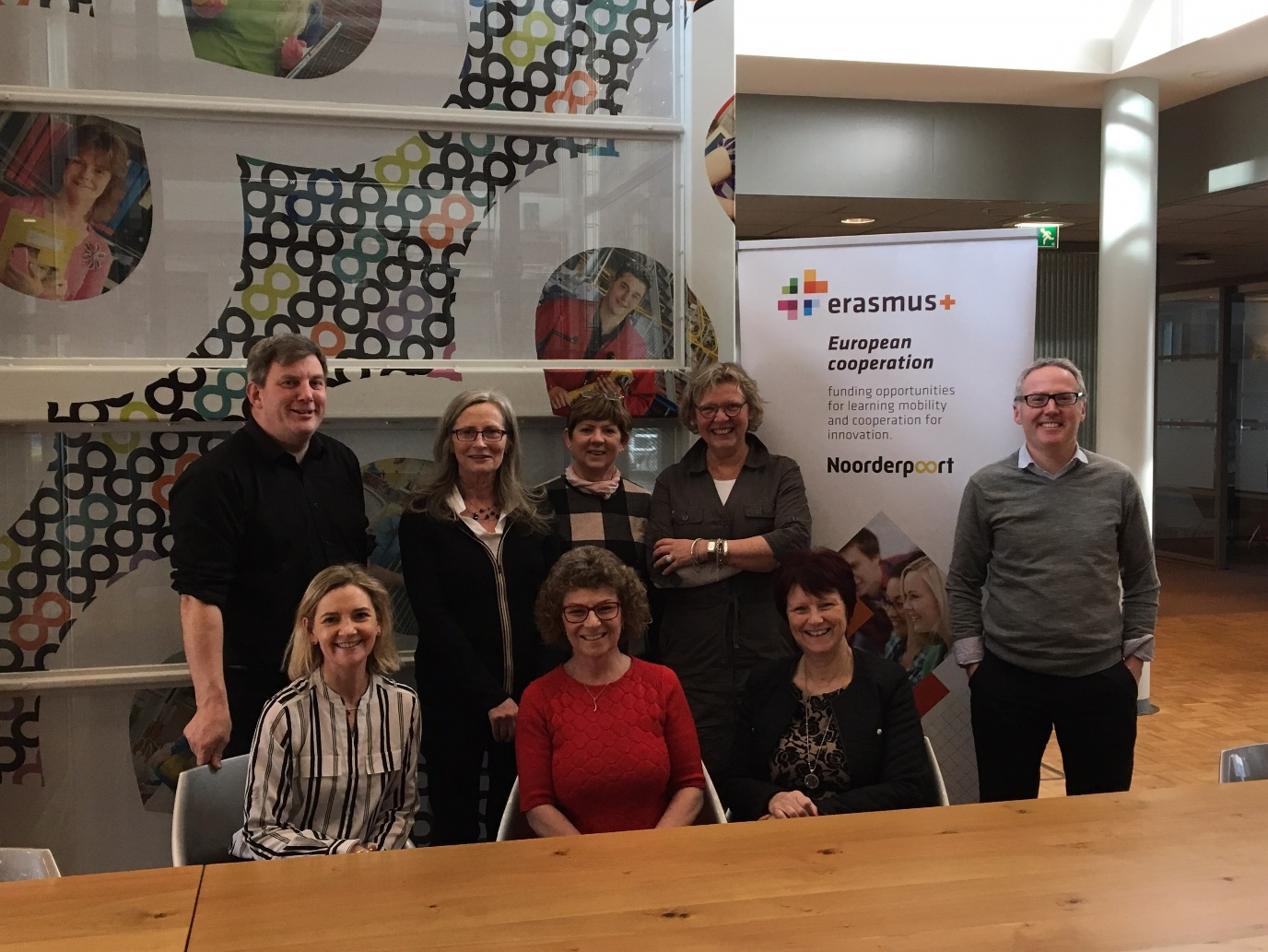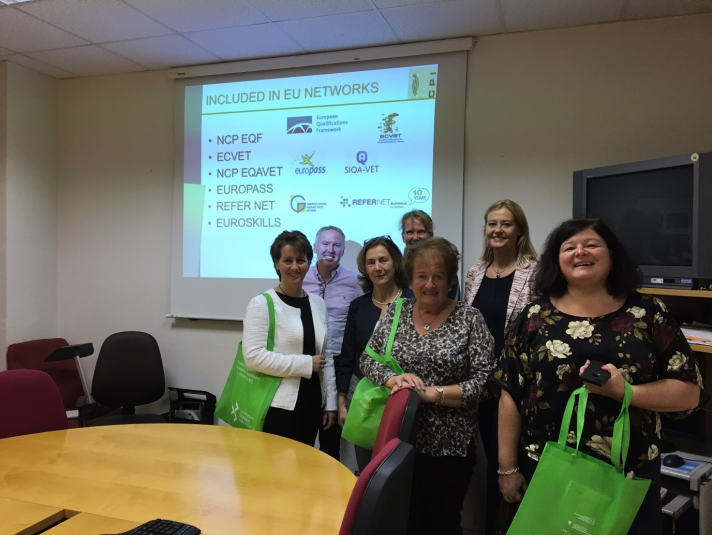
Topic(s) addressed
This project was aimed at supporting 21st century Teaching and Learning with an emphasis on the requirements of the CDETB Technology Enhanced Learning (TEL) Strategy and Continuous Professional Development (CPD) Strategies. Specifically, the project sought to explore new innovative practices to be utilised by CDETB; facilitate digital competences so as to have the ability to access information from anywhere and at any time; facilitate blended learning, an education program (formal or informal) that combines online digital media with traditional classroom methods, which requires the physical presence of both teacher and student, with some element of student control over time, place,
path, or pace; encourage the use of social media as a means of communicating with the 21st century student; implement the flipped classroom (a pedagogical model in which the typical lecture and homework elements of a
course are reversed, with short video lectures viewed by the learner at home before the class session, and in-class time devoted to exercises, projects, or discussions); implement the ‘bring your own devices’ (BYOD) initiative, which supports, enhances, and transforms the learning experience to improve learning outcomes; and, facilitate Interactive Learning.
Target groups
All 12 participants were Irish, gender-balanced, and within the 40-55 age range.
Methodologies
Project participants visited the Noorderpoort Corporate Academy, which supports each centre’s responsibility with regard to the "professionalisation" of its teachers, with the Academy using Office 365 to embed CPD events and corresponding materials for staff. Feedback forms were automatically sent to workshop participants following CPD events, and training was informed by teacher requests, the Noorderpoort strategy, and changes in legislation. Expert teachers were recognised and supported to provide training to colleagues through the Academy, with said teachers reimbursed by their hourly teaching rate plus prep time. All schools finished classes at 3 p.m. on Tuesdays in order to accommodate training, which was provided from 3 p.m. to 6 p.m. The Academy also organised an e-library for staff that all employees can access, and runs a management development programme based on Leadership Profile that is targeted at middle management (a standard module with optional add-on). Middle management hold plenaries/peer supervision 4 times a year, and the themes for these sessions include communication and implementation of the corporate strategy. Specialist schools are located in the city centre, with more general schools located regionally; as such, video screens were used to teach classes in other geographic locations, with students from remote locations being supervised by a teacher but not by the subject matter expert. As part of the teacher’s hours, 5% is defined as continued professional development and 5 % as free choice professional development, with a Certificate of Excellence provided to teachers. Every teacher is required to learn about e-learning and there are “ambassadors" for e-learning across the organisation. To become an ambassador, teachers would have to be invited, and they are given 1.5 days/week to do this work. Each ambassador is offered training from Kennisnet and they can engage in informal peer learning, which facilitates existing working alliances with organic outward learning ripples. As mentioned earlier, the impact of this on learning is monitored through annual discussions with students. Project participants also learnt of the "Excellence Programme" which appeals to students at the higher end of academic achievement, and those who may otherwise drop out due to lack of challenge or engagement. Currently, this is an "opt-in" programme but students must demonstrate motivation and commitment and maintain solid grades. They are then rewarded with access to the programme. Participation in this programme results in additional credit when applying to higher education, with a collateral benefit being the enhancement of teacher collaborations between those in VET and those in higher education.
Environments
Participants witnessed how the WIFI and BYOD for staff and students eliminated the need for structured ICT rooms. "IT rooms" do not lend themselves to being used for any other purposes and can transform any room/area into an IT teaching area. This concept is significantly more cost effective long-term and introduces a much greater level of flexibility into building design. Staff in host countries were provided with a laptop while students are expected to bring their own, with RELLO providing access to materials before and after the class. The use of digital learning to connect students in different classrooms in order to facilitate courses with low enrolment in individual centres was a very interesting model. Students from Noorderpoort could access other students in Higher Education via technology and pose questions to them.
Teachers
Participants were senior CDETB Management, 2 Directors of FET, Head of Curriculum Development, Members of the TEL Strategy Group, principals and Heads of Centre. The project assisted them in formulating the CDETB TEL Strategy, introducing Blended Learning into CDETB, linking learning to a TEL Mentors Programme, and learning SCRUM methodology and TRELLO as a digital SCRUM board ("EduSCRUM") in CDETB. Following her experience in the Netherlands, the Director of Curriculum Development responsible for CPD undertook training in SCRUM. Software such as Trello and other management related software were explored as a means of encouraging innovation and creative developments within pedagogical practices, thereby raising the learner’s digital competencies’ profile.
Impact
This project provided opportunities for Senior Management in the City of Dublin Education and Training Board to explore Innovative Work Practices in 21st Century Teaching and Learning in similar large EU organisations. Completing work of this nature also provides the opportunity to gain first-hand knowledge of other European education systems, hone their professional skills, and ensure their own continuous professional development. Participation in the project has enabled a core number of senior management, principals, and Heads of Centres with responsibility for TEL and CPD to implement actions in these areas while gaining valuable continuing professional development on a personal level and operating within a collaborate environment. Currently CDETB is rolling out the TEL and CPD Strategies, and this project supports that undertaking.
- Reference
- 2017-1-IE01-KA102-025597
- Project locations
- Ireland
- Project category
- VET schools
- Project year
- 2021
Stakeholders
Participants
ROC Noorderpoort
- Address
- Netherlands
Šolski Center Kranj
- Address
- Slovenia

